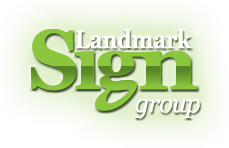1.28.2015
What file formats are needed to design and build outdoor signage
It’s a magical feeling to see an image of your initial idea represented on top of a building, displayed in a brilliant arrays of color and sprouted out into the night by crisp LED lighting. Your business’ outdoor signage is more than just a signpost: it’s a constant reminder of your brilliant achievement. “Look how far we’ve come.”
The path to making your own outdoor sign is actually pretty simple, but the path to transposing your business branding into the outdoor signage needs to start with a strong foundation.
The foundation comes from the initial graphical assets your branding sits on. More specifically, your branding assets' digital file formats.
Best file formats used for building outdoor signage
Nowadays, most every outdoor sign starts with plans that are built on computer. In order to build the richest representation of the outdoor signage before construction, a high-resolution file of the graphics is required.
Examples of common high-resolution file formats
Because of the world-wide popularity of the graphic design software Adobe Photoshop, .PSD formats are typically considered the standard. But for what we need, our standard is to utilize Adobe's Illustrator Software.
Adobe Illustrator allows more easily create line art, which means we can draw sharper, more distinct shapes that better translate from electronic to print designs.
Adobe Illustrator's file format are files saved in .ai.
Speaking of Adobe, we have also been able to create designs based off of logos that were saved in .pdf (Adobe Reader) format, but with a catch: the asset has to allow us to trace and converted in Illustrator. This means the file, at minimum, has to be saved with the CMYK color palette.
Being in the file format doesn't necessarily mean they’re a high resolution file
Just having your logo and images in these file formats doesn't magically make them high-resolution files. The images in these files also have to be designed with a focus on high-resolution and saved in a compression ratio suitable for print. Typically, 300 DPI is the basic minimum standard minimum for print-ready images.
Not sure if you’re file fits the format?
Feel free to send us over the file. We provide free estimates and initial consultations and we’ll let you know if your assets are ready to go. And if they aren’t, we’ll help get them ready to go.



